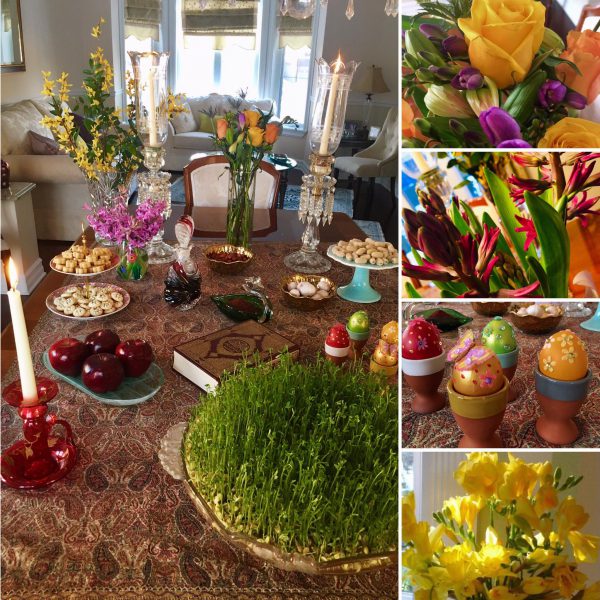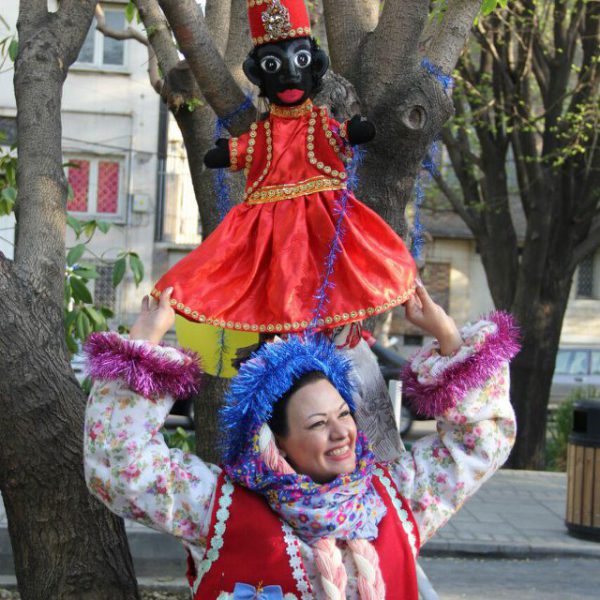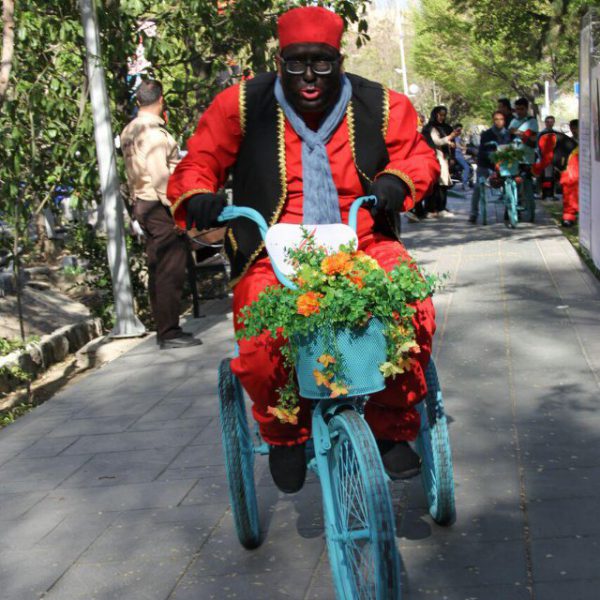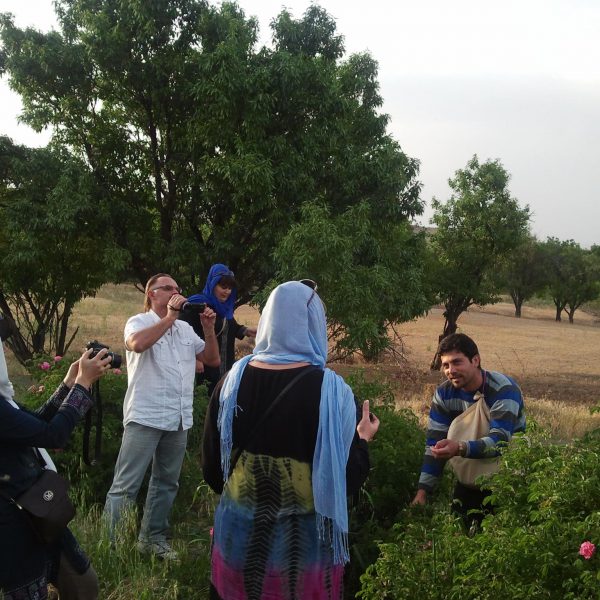Iran Festival Tours
There are Numerous Iran Festivals that are celebrated by different communities in Iran. Due to its multi-cultural influences, Iran boasts of festivals that combine the essence of various cultures and religions including Syrian and Roman influences along with Persian culture and Zoroastrianism.
iranian new year ( Nowroz Festival) 19 March-02 Apr
it is held all over iran more
Rose water Festival in Iran
Almost a thousand years ago, the prominent Iranian scientist, Avicenna, has emphasized the use of dry herbs and distillates such as rose-water in many of his book chapters. Rose-water (Gulab) is taken from a flower named Damask Rose, which is a kind of rose and has been planted in ancient times in Iran. But since its extract has been exported from Damascus to Europe, it is also called by this name. It is used to treat many diseases, including coughing, stomach pain, digestive problems, and also contains a variety of vitamins and antioxidant.
Rose-water festival is one of the most popular Iranian festivals, and there are a lot of people going to visit it every year. The rose-water making is done in 14 provinces of Iran from early May to late June. The Botanical Gardens of Tehran, Dodangeh in Mazandaran, Bardsir in Kerman, Damghan in Semnan, Meymand and Lay zangan of Fars, Abyaneh, Barzok, Niasar and Qamsaar in Kashan are among the areas where the rose-water making is being done. The rose-water is obtained from the distillation of the Damask Rose. During the ceremony, bees and insects bite, and the smell of flowers and pollens that may cause allergic should be considered. Rose-water has many uses. The Kaaba, the holiest place for Muslims in Meccca, is purified every year with the Qamsar rose-water. It is also used in perfumery and cosmetics industry as well as flavor in Persian desserts and sweets.
Pir Shalyar – A Remarkable Festival in the Glorious Village of Howraman Takht
The festival has roots dating back at least 1000 years, and despite its Muslim overlay, it’s believed to have pre-Islamic roots. some elements might be ‘Mithraic’ in origin and possibly contain cultural relics of pre-Zoroastrian ‘angel’ worship. More commonly, it’s thought to be a fusion of Zoroastrian and Islamic ideas based around the legend of a legendary hermit whose reputation as a healer spread far and wide. As far, in fact, as Bukhara in what’s now Uzbekistan. There a king had a beautiful daughter who was a deaf-mute who nobody could cure. Until that is, she was sent – along with a large entourage – to Howraman, where Pir Shalyar performed a miraculous healing. To honour him, the grateful father then offered Pir Shalyar his daughter’s hand in marriage – something that the hermit neither sought nor could afford since the cost of the wedding would have been colossal and he was a penniless mendicant. However, the whole region chipped in to create a celebration that has been remembered ever since. Or so the story goes. There are numerous versions.
Chak Chak Fire temple festival 16 jun
Chak Chakou or Pir-e Sabz, this important Zoroastrian fire-temple is on a hill 52 km on the north-east of Yazd. It attracts thousands of pilgrims for an annual festival which has lasted for ten days from the beginning of the third month after Nou Ruz.
Day of St. Thaddeus 24 jul
Iran’s Qara Kelisa will honor the memory of Saint Thaddeus and his faithful followers during a ceremony in the northern province of West Azarbaijan.Scores of Armenians, Assyrians and Catholics from Iran and other countries will attend the annual event as part of their pilgrimage on the Day of St. Thaddeus.The ceremony is known as one of the largest religious ceremonies held by Armenians of iran .
Qalishoyan : Mashhad Ardahal (42 km west of kashan) 05 oct
Qalishuyan is a ritual ceremony in the Mashhad-e Ardehal a town near Kashan. Thousands of people of Kashan, Fin, Khave, and surrounding villages take part in the Qalishuyan ritual (literally carpet washing) each year.
The only religious ceremony in Iran holding according to the Persian solar calendar takes place commonly on the second Friday of Mehr (the 7th month coincides with October).
This impressive gathering and traditional ritual symbolize the funeral and mourning of Soltān Ali the son of Imam Mohammad Bagher (the 5th Shia’s Imam) who was martyred in this region about a thousand years ago. Locals found his body and carried it on a carpet to a stream where it was washed and then buried.
On Friday a group of local people wrap a carpet of his mausoleum with a special ritual of sprinkling rosewater on it and reciting poems, then delivers it to another group of mourners waiting in the courtyard. They carry carpet to the stream as a sign of washing Soltān Ali’s blood off the carpet; at the same time another group who are holding a stick symbolizing the fight against the murderers accompany them; at the end, the carpet is returned to the mausoleum.
Qalishuyan rituals which are assumed related to some ancient Persian religion or traditions have been transmitted to new generations by oral tradition.
Jashn Sade : yazd 29 JAN
29JAN A mid-winter feast to honor fire and to “defeat the forces of darkness, frost and cold” in which people gather around and build a fire so that they can receive good things from the fire and give the fire their incompleteness.it is held in cham village of yazd.
Yalda Festival 20 Dec
The turning point. End of the longest night (darkness) of the year, and beginning of growing of the days (Lights). A celebration of Good over Evil. it is held all over iran read more
Chaharshanbe Sori 19 MAR
19 MAR Festival of Fire, last Tuesday night in the Iranian Calendar year. It marks the importance of the light over the darkness, arrival of spring and revival of nature .it is held all over iran.
Ashura & Tasoa 24-25 NOV
one of the unique times to travel to Iran is during the lunar month of Muharram, because Shia Muslims in Iran have special ceremonies during this month, especially the first 10 days. And the tenth day of Muharram called “Ashura”.Shi’a Muslims observe the day in mourning for Hussein (3rd imam of shia ) and in remembrance of his martyrdom. In Iran, Iranians perform Ta’zieh, the old Iranian dramatic parade (post Islamic era). There exists also a rather special recipe for some special drinks in this festival. Many people cook something and offer it to their neighbors as gifts.it is held all over iran but in yazd city worth to visit because of Nakhl Gardani ceremony . Nakhl Gardani is a Shia religious ritual carried out on the day of Ashura for commemorating the death of Husayn ibn Ali, the grandson of the Prophet Moḥammad and third Shia Imam. Nakhl is a wooden structure used as a symbolic representation of the Imam’s coffin and Nakhl Gardani is the act of carrying the Nakhl from one place to another, resembling an Imam’s funeral.Ashura in Yazd can be a fascinating time to travel to Iran, as it allows particular insights into the Shia Muslims and hospitable disposition of the Iranian people.
Ramadan in iran
Ramadan month is a significant time for Muslims and is observed as a month of fasting ,prayer and reflection .the month of Ramadan is the ninth month of the Islamic calendar and is considered to be the holiest month in islam. During this time Muslims in iran abstain from food and drink from sunrise to sunset , and instead focus on spiritual activities such as reading the Quran , attending mosque for prayers , and performing acts of charity .
The fast is broken each evening with a meal called Iftar and families often gather together to break their fast and share in the blessings of the month Due to its ethnic diversity, Iran has special local food traditions during Ramadan, which is interesting for tourists. The customs of different ethnic groups in Iran show that the food traditions of the ethnic groups during the month of Ramadan all over Iran create a beautiful image separately . In some more religious cities like Qom and Mashhad, Ramadan creates a completely different atmosphere providing a unique experience for visitors. The first day of the next month is Eid for Muslims. It’s a 2-day celebration and festival as fasting days and holy Ramadan ends. This day is truly wonderful as everyone and everything changes.




